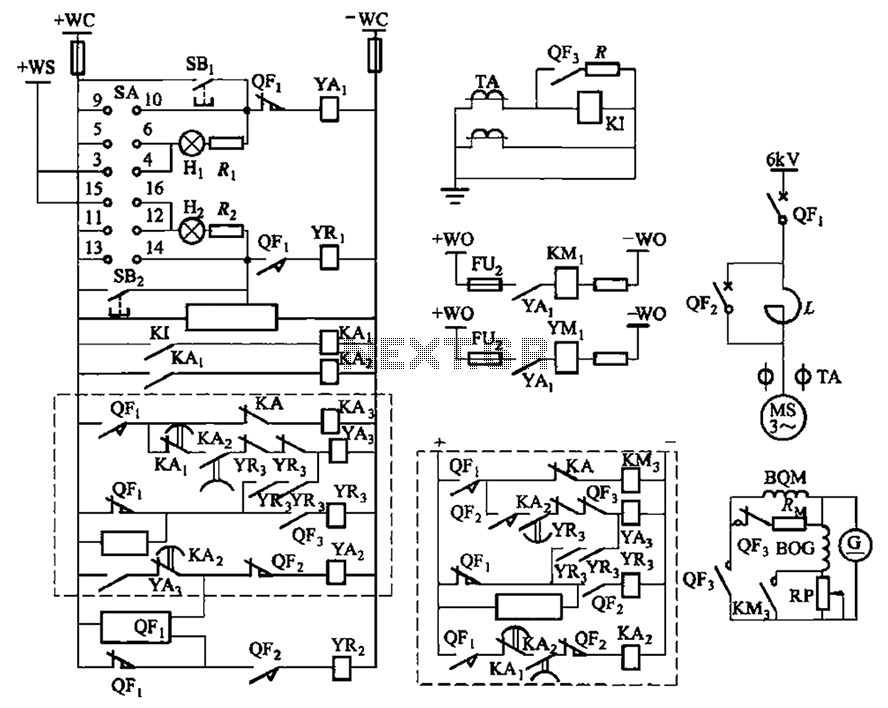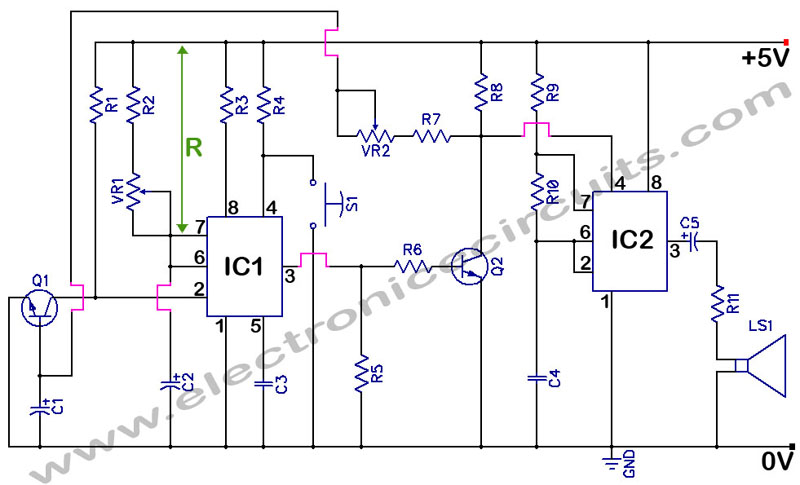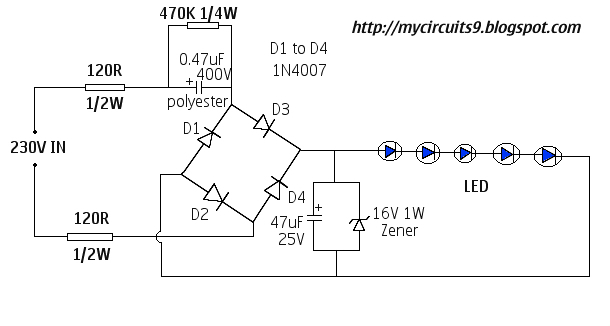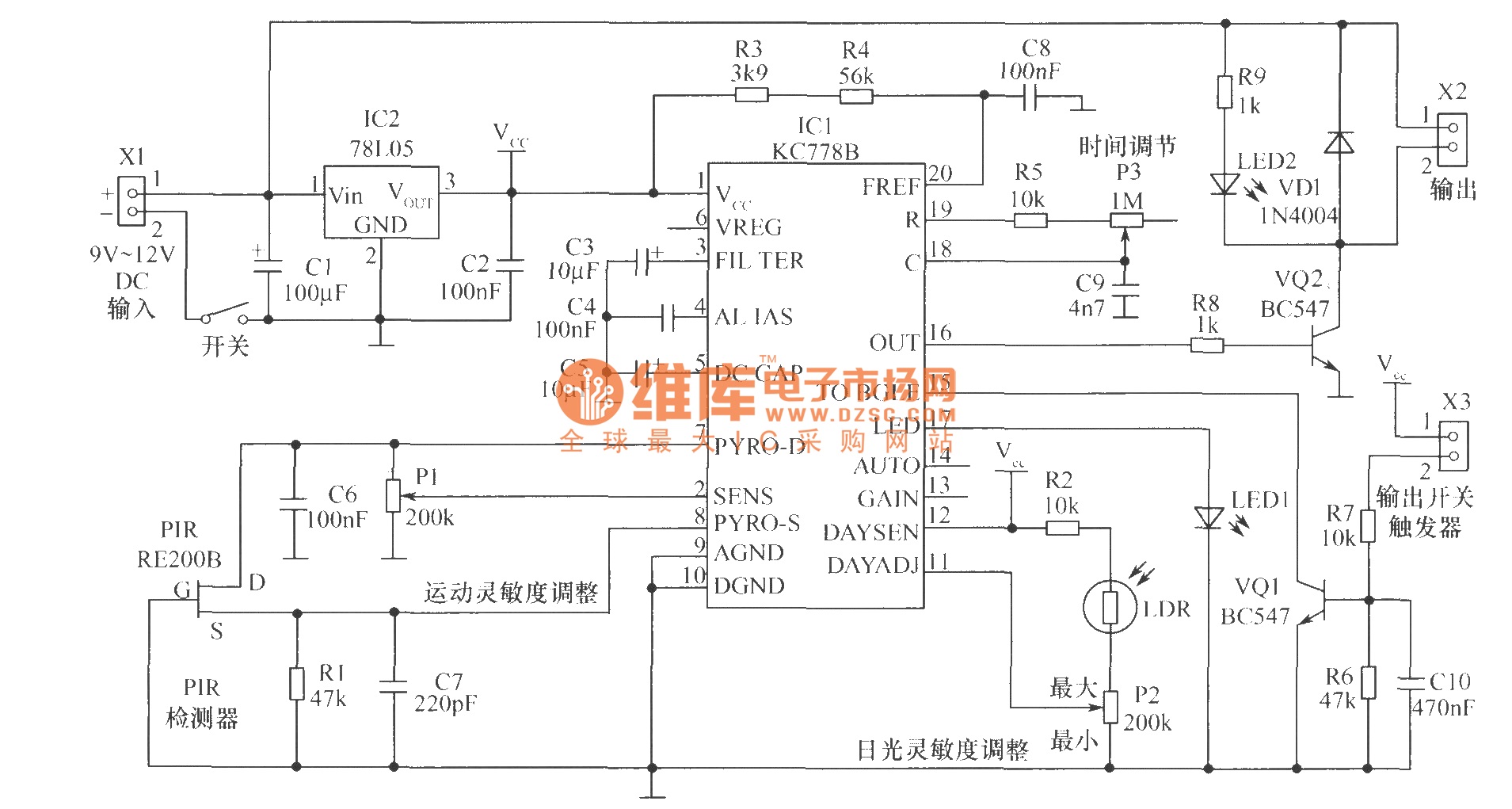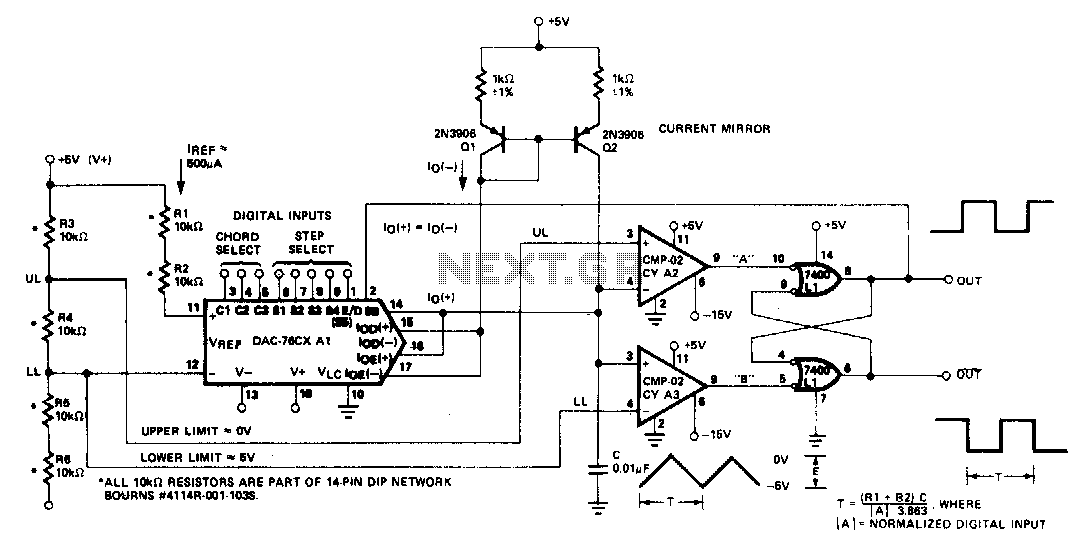
Using two operator triangular wave oscillator circuit

This circuit utilizes two operational amplifiers configured as triangular wave oscillators. It demonstrates a practical application of a relaxation oscillator that employs a voltage comparator to execute the switching function. The schematic in FIG. 2 illustrates the composition of the operational triangular wave oscillator.
The circuit design involves two operational amplifiers (op-amps) arranged to generate a triangular wave output. The first op-amp functions as a voltage comparator, receiving a reference voltage and the output voltage from the triangular wave oscillator. The comparator toggles its output state between high and low based on the input voltages, effectively creating a switching function that drives the oscillation.
The triangular wave oscillator is typically configured using a resistor-capacitor (RC) network. The charging and discharging of the capacitor through the resistors create a linear ramp-up and ramp-down of voltage, which results in the triangular waveform. The frequency of oscillation can be adjusted by varying the values of the resistors and capacitors in the RC network.
In this configuration, the second op-amp can be used to further process the output signal, enabling functionalities such as signal conditioning or level shifting. The integration of these two op-amps allows for a versatile oscillator design that can be adapted for various applications, including signal generation, waveform shaping, and timing circuits.
Overall, this circuit exemplifies the effective use of operational amplifiers in generating oscillatory signals and demonstrates the principles of relaxation oscillation through the combination of voltage comparators and triangular wave generators.Using two operator triangular wave oscillator A practical application of the relaxation oscillator using a voltage comparator to perform the switching function, FIG. 2 is the use of composition operator triangular wave oscillator.
The circuit design involves two operational amplifiers (op-amps) arranged to generate a triangular wave output. The first op-amp functions as a voltage comparator, receiving a reference voltage and the output voltage from the triangular wave oscillator. The comparator toggles its output state between high and low based on the input voltages, effectively creating a switching function that drives the oscillation.
The triangular wave oscillator is typically configured using a resistor-capacitor (RC) network. The charging and discharging of the capacitor through the resistors create a linear ramp-up and ramp-down of voltage, which results in the triangular waveform. The frequency of oscillation can be adjusted by varying the values of the resistors and capacitors in the RC network.
In this configuration, the second op-amp can be used to further process the output signal, enabling functionalities such as signal conditioning or level shifting. The integration of these two op-amps allows for a versatile oscillator design that can be adapted for various applications, including signal generation, waveform shaping, and timing circuits.
Overall, this circuit exemplifies the effective use of operational amplifiers in generating oscillatory signals and demonstrates the principles of relaxation oscillation through the combination of voltage comparators and triangular wave generators.Using two operator triangular wave oscillator A practical application of the relaxation oscillator using a voltage comparator to perform the switching function, FIG. 2 is the use of composition operator triangular wave oscillator.

